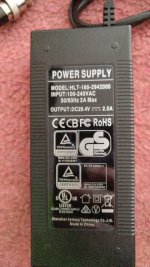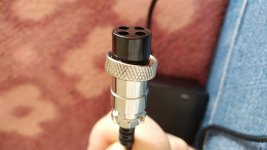omadawn
10 W
- Joined
- May 16, 2019
- Messages
- 90
Ok, forget all the above, problem came back, right after this last full charge...  :?
:?
This time, no "voilá".... What seemed to me the reset solution, this time did not work.
This is happening always after the complete discharge, or, like if something is blocking the power to the motor right after a complete charge...
I guess we are back on "square one"...
decided the disconnect the black alone that goes from that battery straight to the controller.... Have done it before, But this time left the LCD screen on, while running the disconnect & connect process...
And voilá...
This time, no "voilá".... What seemed to me the reset solution, this time did not work.
This is happening always after the complete discharge, or, like if something is blocking the power to the motor right after a complete charge...
I guess we are back on "square one"...



